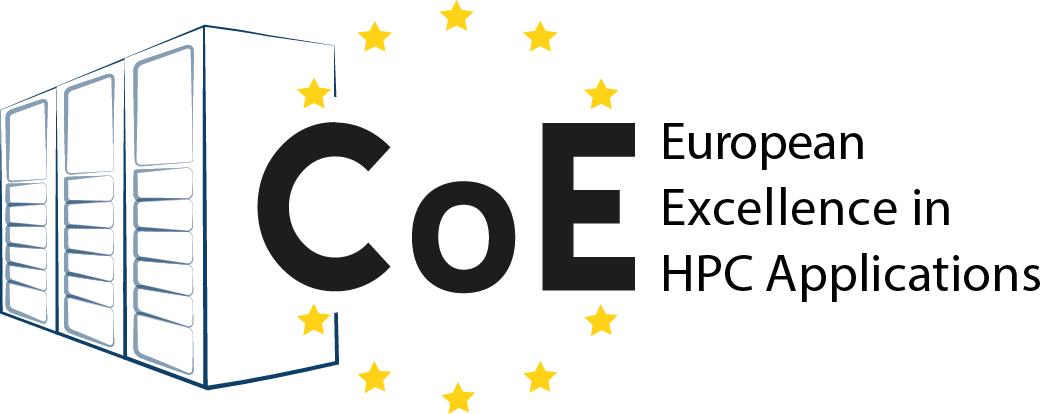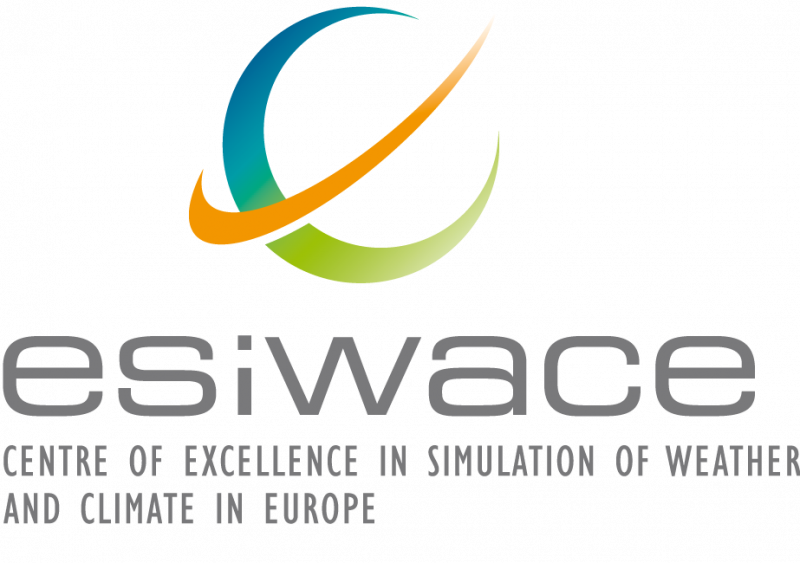Support to Code Optimization
This page lists the support to code optimization provided by each of the CoEs.
-
Excellence in Biomolecular Software
Improve the performance, efficiency and scalability of key codes in particular code optimisation for efficient and scalable high-performance computing
• GROMACS (Molecular Dynamics Simulations)
• HADDOCK (Integrative modeling of macro-assemblies)
• CPMD (hybrid QM/MM code for enzymatic reactions, photochemistry and electron transfer processes)
Excellence in Usability
• Make ICT technologies easier to use by biomolecular researchers, both in academia and industry
• Devise efficient workflow environments with associated data integration
To get access to these resources:
- One of main goals of the CompBioMed Centre of Excellence (CoE) is to strengthen and diversify the presence of biomedical applications in the High-Performance Computing (HPC) landscape developing and optimizing customers’ codes. In order to facilitate the development of specific services to support computational biomedicine, we need first to understand and characterize the immediate, medium- and long-term requirements of the main applications used within the three CompBioMed research domains: cardiovascular/respiratory, molecularly based and neuro-musculoskeletal medicine. For each application we identified the computational requirements, data access and storage models and infrastructure usage, for users both from academia and industry/SME.
To get access to these resources:
- At the scientific level E-CAM has chosen to prioritize four broad areas of science that are central to the interests of CECAM. These vertical scientific pillars are classical molecular dynamics, electronic structure calculations, quantum dynamics, and meso-scale and multi-scale modelling. They generally provide code optimization for Exact and Linearized Quantum Dynamics providing a general quantum dynamics code with Smolyak method. It involves the implementation of MPI and MPI/openMP hybrid, according to the progress, for the improvement of the code efficiency in the framework of Smolyak method. The MPI is designed to be applicable for various levels of machine, from small to massive clusters. The code is generally applicable for normal quantum molecular simulation. The first direct application of the code in the project will be the simulation of Clathrate hydrate.
To get access to these resources:
-
They monitor and improve the performance of code and third-party applications using a unique developed methodology valid for: Code auditing and performance assessment
Code optimization roadmap
Porting your code on new HPC architecture
Automated performance metric extraction scripts
Seamless monitoring of code performance during development Runtime systems
Code refactoring
Software Package/Technology integration (I/O, linear algebra...)
Special-purpose algorithms: eigenstate computation for large matrix Poisson solvers
To get access to these resources:
- The Centre of Excellence in Simulation of Weather and Climate in Europe (ESiWACE) - for future exascale weather and climate simulations, enables global storm- and eddy resolving weather and climate simulations on the upcoming (pre-)Exascale supercomputers. By explicitly resolving storm dynamics, they vastly improve weather and climate simulations. Improved weather forecasts and climate projections are used for the challenges from changing heat waves, dry spells, rains, and floods. Adapting and optimizing complex code to take advantage of new computing HPC architectures is a cumbersome task. The development life cycle of weather models does not match the fast pace of the new hardware releases therefore it is appropriate, restructuring the code and apply specific architecture optimization in order to get optimal performance when porting models to those new architectures. This leads to multiple specific versions of the same code optimized for a single target supercomputer and not portable among them.
To get access to these resources:
- The EXCELLERAT project is a single point of access for expertise on how data management, data analytics, visualisation, simulation-driven design and code optimization with high-performance computing (HPC) can benefit engineering, especially in the aeronautics, automotive, energy and manufacturing sectors. The biggest benefit of HPC is to increase the processing speed by means of optimized codes, which enables businesses to deliver faster results and save money. EXCELLERAT aims to tackle the ever-rising complexity of scientific and development endeavours. Thus, Exascale computing is the focus, which will solve highly complex and costly engineering problems, and create enhanced technological solutions even at the development stage.
To get access to these resources:
- The high level support, beside other consulting actions, offers also to users the best practices to exploit the flagship codes: choice of best simulation parameters; porting and benchmarking; development of new features and/or post-processing tools.
- MaX also offers personalised consultancy to industries for targeted needs in using the flagship codes.
To get access to these resources:
- POP CoE-A Centre of Excellence on performance optimization and productivity that promotes best practices in parallel programming giving users a precise understanding of application and system behaviour and suggestions/support on how to refactor code in the most productive way in order to maximize efficiency (performance, power) of compute intensive applications and productivity of the development efforts.
- Parallel Application Performance Assessment (Primary Service): Initial analysis measuring a range of performance metrics to assess quality of performance and identify the issues affecting performance. If needed, also identifies the root causes of the issues found and recommend approaches to address them
- Proof-of-Concept (Follow-up service): Experiments and mock-up tests for customer codes, Kernel extraction, parallelisation, and mini-apps experiments to demonstrate the actual benefits of proposed optimisations
To get access to these resources:








